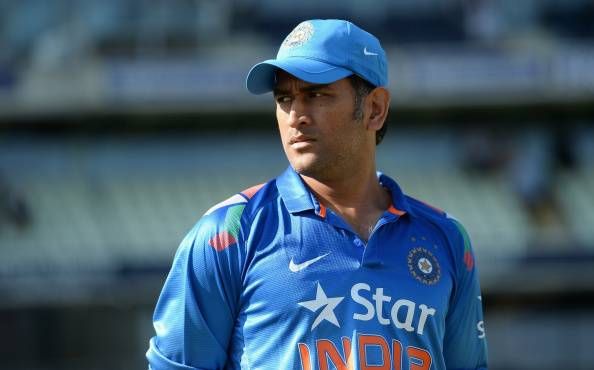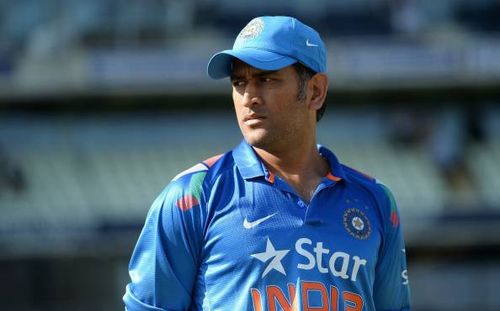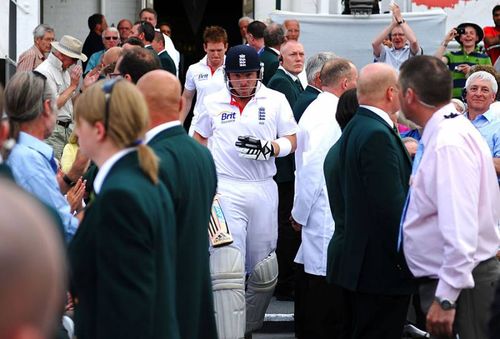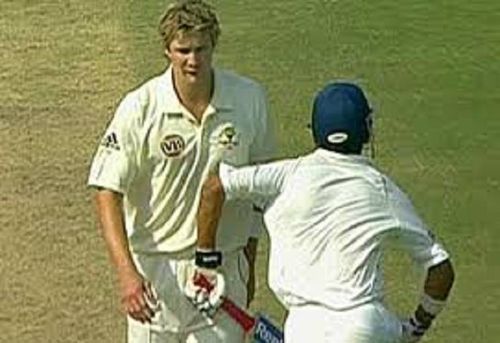
Why MS Dhoni and Mustafizur Rahman deserved to be fined for their collision

Already down 0-1 in the India-England series in 2011 and facing yet another drubbing from Alastair Cook’s boys, Mahendra Singh Dhoni, displaying a fine display of sportsmanship, recalled Ian Bell, who had been dismissed in a farcical fashion on the last delivery before tea on day 3 of the second Test match in Trent Bridge.
Batting on 137 and believing that the final delivery of the session had gone for a boundary, Bell started walking back towards the pavilion, unaware that the ball had been pushed back in. He then noticed, only too late, that he had been run out by Indian fielder Abhinav Mukund.
In a surprising turn of events, Bell was back batting on the crease once the new session started, after Dhoni and the Indian team decided to give the batsman a reprieve.
This incident, lauded by critics and the English team alike, came to reinforce why the sport prides itself on being called a “gentleman’s game”. Before being marred by vices like sledging, swearing, match-fixing and untoward displays of aggression, cricket had come to be defined as a sport where the rivalries were intense, but the friendships stronger.

As the decades changed and the millennium turned, Steve Waugh and his Australia introduced into cricket a dimension which would be followed suit by the other playing nations.
With sledging becoming the norm and the clichéd phrase “let the bat and ball do the talking” going for a toss, the players started mincing no words while mouthing their expletive thoughts. Bats started flying at the opposition and cricket, till then a mental game of skills and talent, started bordering on physical aggression.
The bowlers thought it necessary to give the dismissed batsman an ugly send-off, with the innocent spectators and scribes also bearing the brunt of the players’ jibes. Cricket, a game which had held onto its standards for so long, seemed to be dying a slow ethical death.
The Dhoni-Mustafizur collision as it happened
The latest to join the bandwagon of players who have breached the spirit of the game is none other than Dhoni himself. Adding to the long list of ‘push gate’ incidents, the Indian captain was embroiled in an ugly brawl with Bangladeshi debutant Mustafizur Rahman during the first of the three-match ODI series between the two nations on Thursday.
During the second ball of the 25th over of the Indian innings, MSD ran for a single after driving a Rahman delivery to mid-off. Midway through the run, he barged into the bowler, who was unable to complete the over after sustaining an injury and had to leave the field. Rahman, however, returned to the field in the very next over itself.
Already hauled up for a similar act in the 5th over of the innings, where he had blocked Indian opener Rohit Sharma during his follow-through, the 19-year-old was held guilty and fined 50% of his match fees, with the Indian skipper coughing up 75%.
Was it intentional, and should they have been fined?
Match referee Andy Pycroft accused the wicketkeeper-batsman of deliberately shouldering Rahman, and of breaching level 2.2.4 of the ICC Code of Conduct which states that any “inappropriate and deliberate physical contact between players during play will earn a fine of 50% to 100% of match fee and/or ban for 1 Test or 2 ODIs”.
Dhoni, in his calm demeanour, described the incident at the post-match press conference by stating, “Well, I thought he will move, he thought I will move and both of us ended up colliding because I had to take the closest path possible getting to the other end. If I am going around the bowler, more often than not they'll get the batsman out.”
These words only highlight that Dhoni was aware of Rahman’s presence while going for a quick single, refusing to move right in order to avoid a run-out.
Rahman, on his part, saw Dhoni and earlier Rohit run towards him but still tried to get in their way. With the commentators disapproving his behaviour and Harsha Bhogle even suggesting that “it’s a habit that he has picked up”, the bowler would do well not to develop a bad reputation this early in his career.
Although Dhoni finished off the incident with a smile, it did leave a bitter aftertaste, with the world noticing how the Indian, who has always been the pinnacle of composure, shouldered aside a youngster to prevent himself from being dismissed.
Woefully out of form and with India already struggling with 5 wickets down, the 33-year-old should instead have had a word with the rival captain Mashrafe Mortaza and the umpires, knowing well how such an incident can mentally impact a youngster.
A sport of physical contact over the years
Bhogle’s words, where he termed Rahman’s actions as a “habit that he has picked up”, only highlight the sorry state of affairs in cricket today.
Way back in 2000, Australian cricketer Stuart MacGill, after he was dismissed because of a poor umpiring decision, barged into West Indies’ substitute Ramnaresh Sarwan on the steps leading to the dressing rooms.
West Indian Fidel Edwards, during the ICC T20 World Cup in 2007, brushed shoulders with Herschelle Gibbs after bowling a bouncer to the South African.
Sreesanth shoved his way past England skipper Michael Vaughan in 2007 during the India-England Test series.
James Anderson, much before he was alleged to have pushed Ravinder Jadeja last year, was hauled up in 2007 for nudging West Indian Runako Morton twice.
Gautam Gambhir, after a collision with Shahid Afridi in a high-intensity encounter with Pakistan, was accused of elbowing Shane Watson while coming back for a two during the India-Australia Test series in 2008.

All these incidents and more raise the question – is cricket losing its reputation of being a sport that is played by chivalrous and courteous gentlemen? Is it influencing the youngsters to forego the traditions that have come to define cricket, making them ape a trend that is slowly ensuring the death of the gentleman’s game?
Way back in 1998, Sachin Tendulkar, possibly playing two of his best knocks ever, sent the mighty Aussies into a state of trauma by scoring 143 and 131 runs within two days in Sharjah. No words were spoken, no glares were exchanged. Just a ruthless destruction carried about in the quietest of ways.
Cut forward to 2015, where no series is complete without a push or a shove, a sledge or a confrontation.
As cricket gets humiliated day by day, the administrators have the tough task of curbing the ugly altercations that have encroached into this game, endangering it in the process. By reprimanding Dhoni and Rahman, the ICC has conveyed rather strictly that each incident going against the spirit of the game will be dealt with severely.
A sport which has been honoured by the presence of Rahul Dravid, Jacques Kallis, Tendulkar and Brian Lara is being ruined by the very same people who should rather be caring for it. It’s great that the ICC is taking steps to stop that.